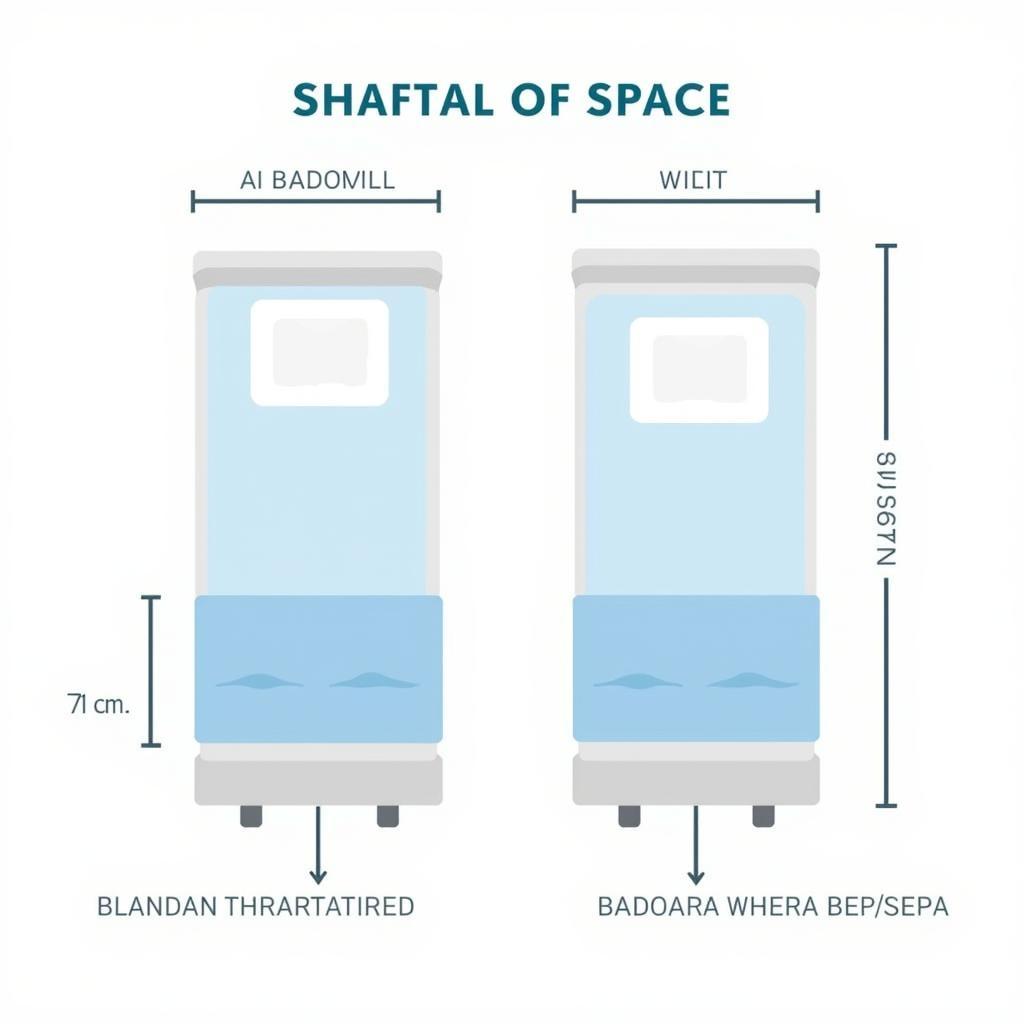When choosing a bariatric hospital bed, dimensions are crucial. These specialized beds accommodate the unique needs of patients with larger body types, ensuring their comfort, safety, and well-being throughout their hospital stay. Understanding the standard Bariatric Hospital Bed Dimensions and available options is essential for healthcare providers and individuals seeking the best fit for their needs.
Understanding Bariatric Hospital Bed Dimensions
Bariatric hospital beds are significantly larger and more robust than standard hospital beds. This ensures the bed can support a higher weight capacity while providing ample space for the patient to move comfortably. Let’s delve into the typical dimensions you can expect:
Standard Bariatric Hospital Bed Width
The width of a bariatric hospital bed typically ranges from 42 to 48 inches. This increased width compared to standard hospital beds (usually 36 inches wide) provides additional space for patients to move freely and comfortably.
 Bariatric Hospital Bed Width Illustration
Bariatric Hospital Bed Width Illustration
Standard Bariatric Hospital Bed Length
The length of a bariatric hospital bed is generally around 80 inches. This is similar to the length of a standard hospital bed, ensuring compatibility with standard bedding and linen sizes.
Bariatric Hospital Bed Weight Capacity
Weight capacity is a critical consideration for bariatric hospital beds. These beds are designed to support heavier patients, with capacities ranging from 600 to 1,000 pounds or even higher in some cases. It’s essential to choose a bed with a weight capacity that comfortably exceeds the patient’s weight to ensure safety and stability.
Choosing the Right Bariatric Hospital Bed Dimensions
Selecting the appropriate bariatric hospital bed dimensions requires careful consideration of the patient’s individual needs.
-
Patient size and weight: Accurately measuring the patient’s height, weight, and body shape is crucial in determining the minimum bed dimensions required.
-
Mobility: Consider the patient’s mobility level and any potential limitations. A wider bed might be necessary for patients who require assistance moving or repositioning themselves.
-
Medical equipment: If the patient requires medical equipment such as ventilators, IV poles, or bedside tables, factor in the additional space these items will occupy.
-
Room size: Ensure the chosen bed dimensions fit comfortably within the available space in the patient’s room, allowing for easy access and movement around the bed.
“When choosing a bariatric hospital bed, it’s important to prioritize the patient’s comfort and safety above all else,” advises Dr. Emily Carter, a leading expert in bariatric care. “A bed that is too small can restrict movement and potentially lead to pressure ulcers, while a bed that is too large can make it difficult for the patient to reach essential items or receive care.”
Conclusion
Selecting the right bariatric hospital bed dimensions is paramount for patient well-being and quality of care. By understanding the standard dimensions and considering individual patient needs, healthcare providers and families can make informed decisions that promote comfort, safety, and optimal recovery. If you are looking for a bariatric hospital bed for sale, be sure to check the hospital bed size in feet to ensure it meets your needs. You can also find helpful information about the best mattress for hospital beds and hospital mattress size to complete your selection. Remember, investing in the right bariatric hospital bed is an investment in the patient’s overall well-being.
For support, please contact us at Phone Number: 02437655121, Email: [email protected] or visit us at 298 Cau Dien Street, Minh Khai, Bac Tu Liem, Hanoi, Vietnam. We have a 24/7 customer support team.